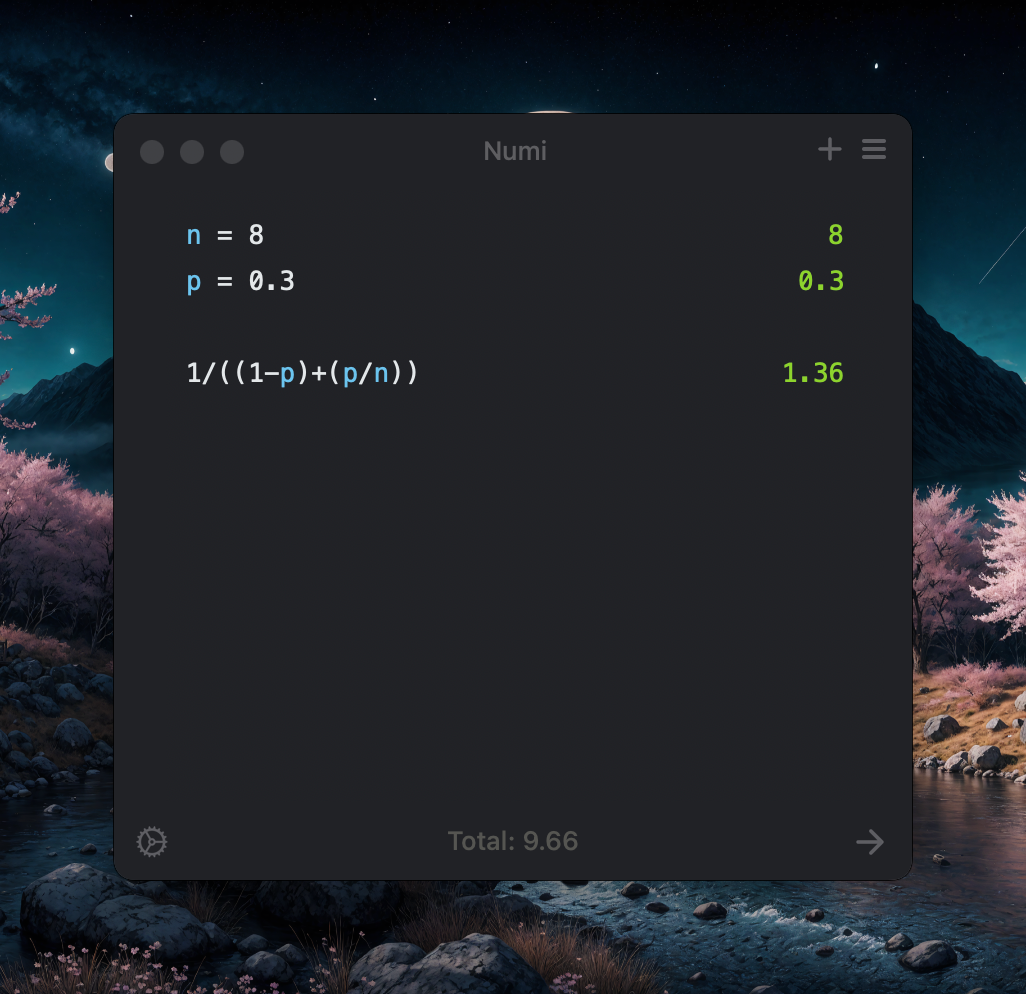Formula which gives the theoretical speedup in the execution of a task having fixed workload that can be expected of a system whose resources are improved by scaling
-
Used in Parallel Computing to predict the speedup and scalability
-
Ignores the parallelism overhead due to which it overestimate the achievable speedup
-
Formula
-
where is the count of processors and is the ratio of parallelism that can be achieved
-
It is very difficult to compute ((20240213134646-idzeeug ‘p’))
-
-
Example

-
Karp-Flatt Metric
-
Amdahl’s law ignore the parallelisation overhead due to which it overestimate the achievable speedup
-
Deals with the overestimation issue of Amdahl’s law
-
The Karp-Flatt metric is used to calculate serial fraction for a given parallel configuration
- Experimentally determined serial fraction takes into account parallel overhead
-
Used to calculate serial fraction of synchronisation
-
Can determine if the efficiency drop with increasing p for a fixed size problem is:
- Because of limited parallelism
- Because of increases in algorithmic or architectural overhead
-
The less the value of e the better the parallelisation
- can be considered as the overhead contributing to speedup
- If is less then speedup should be better and if it isn’t then it’s likely due to more sequential tasks
-
Formula
-

